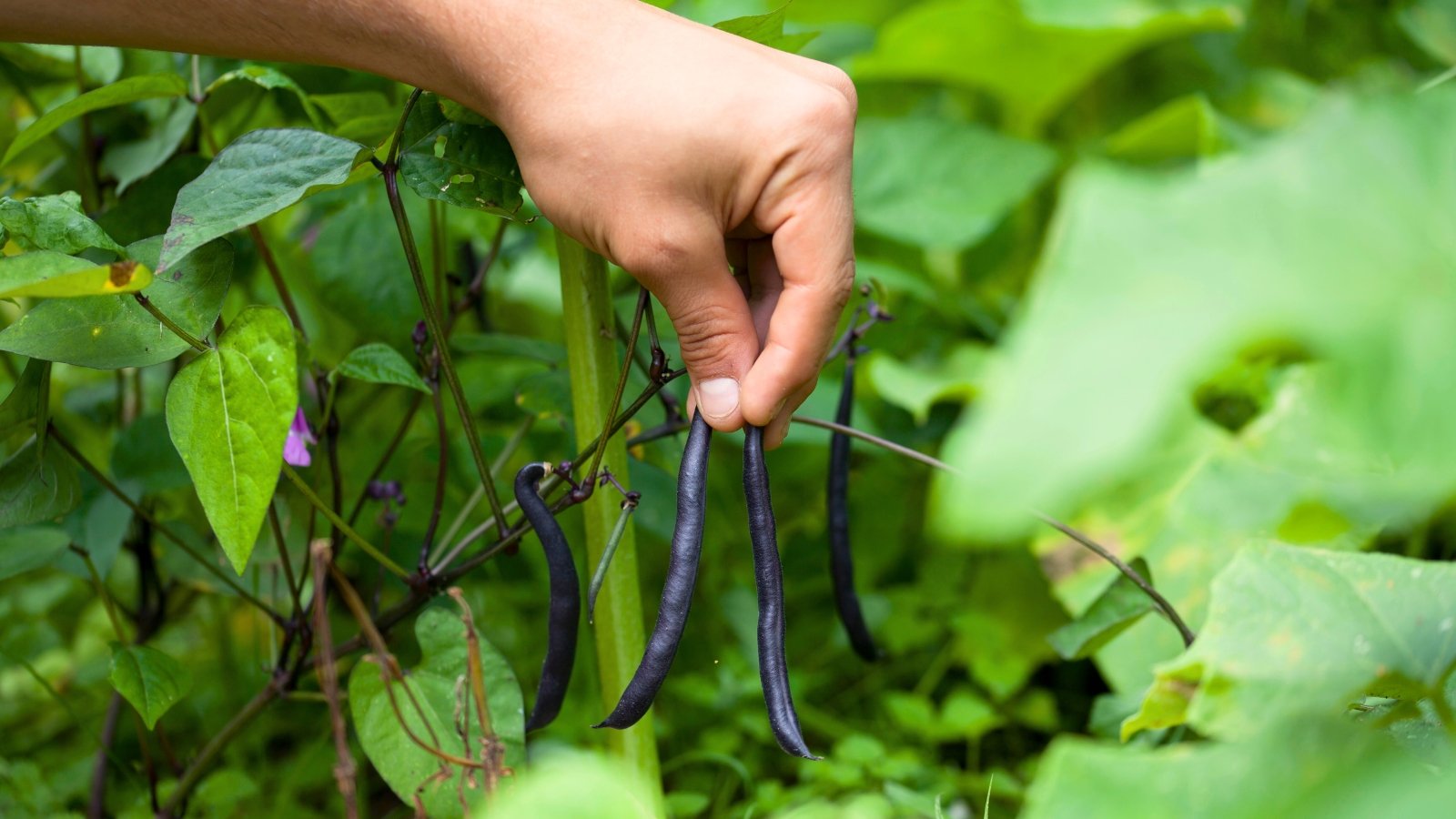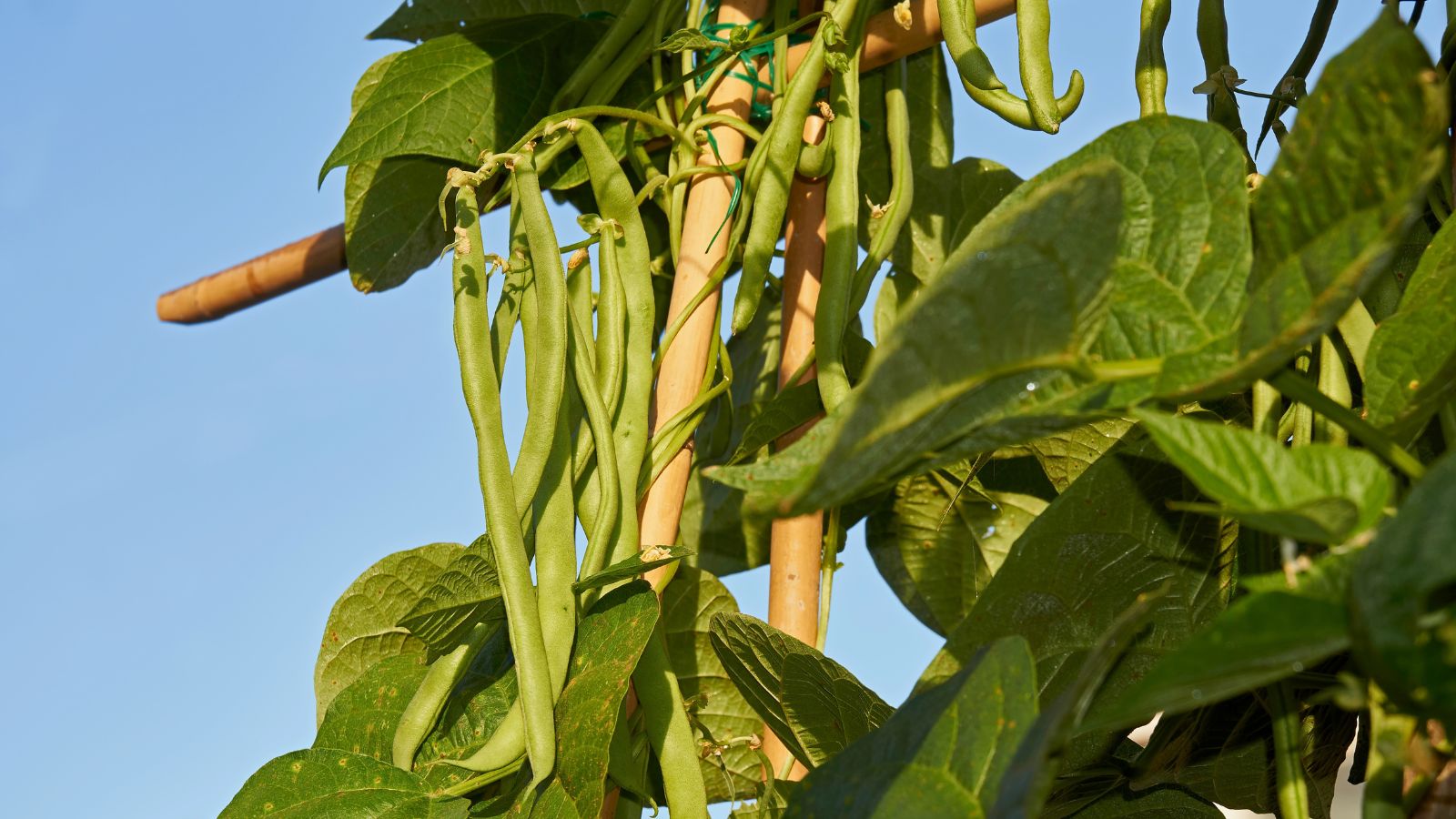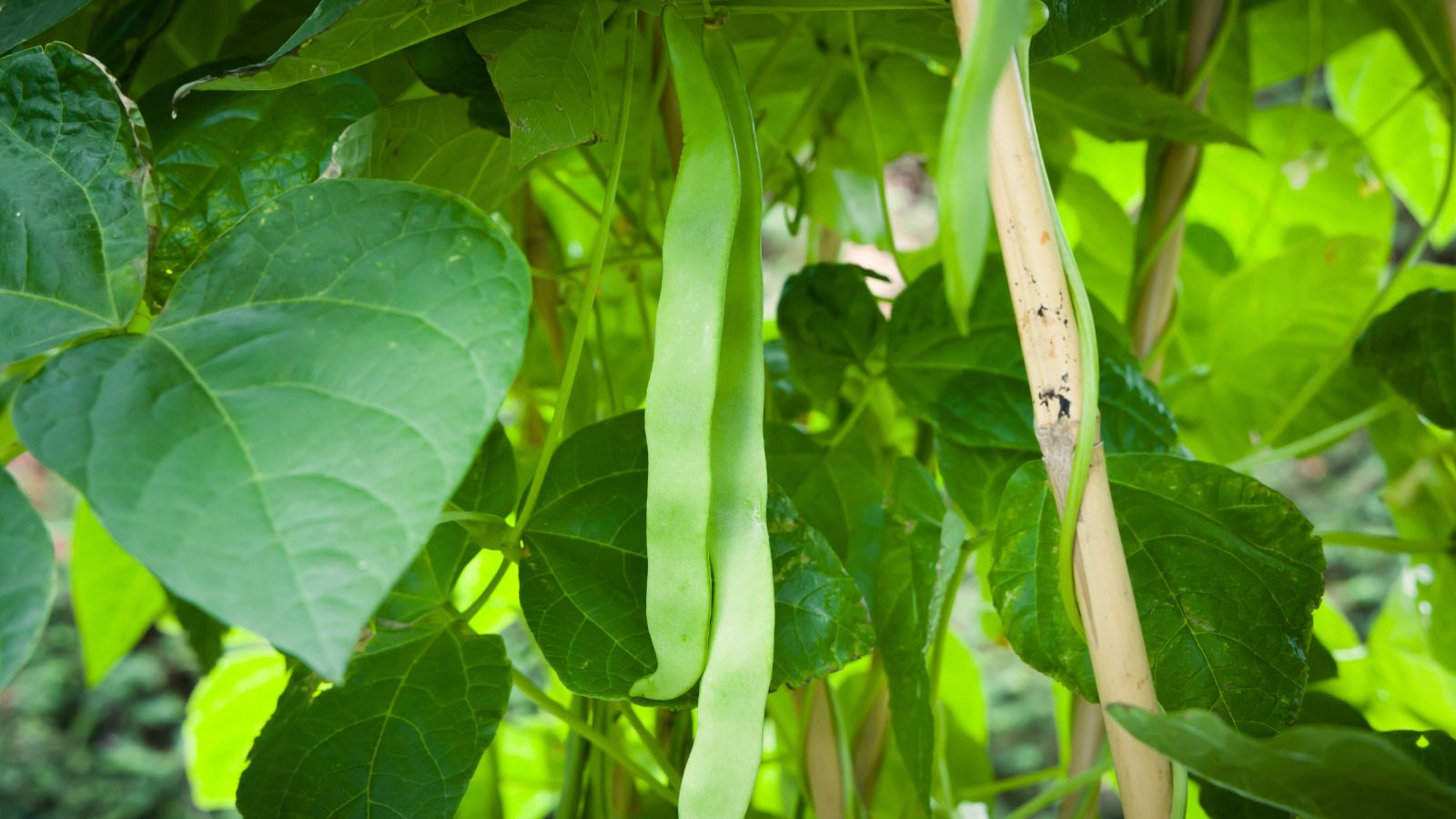PROTECT YOUR DNA WITH QUANTUM TECHNOLOGY
Orgo-Life the new way to the future Advertising by AdpathwayFast-growing pole beans cling and climb on vertical supports on their way to producing nutritious legumes by the fistful. Whether enjoyed fresh and raw, cooked, dried, or pickled, beans have numerous uses and are easy to grow.
Pole beans bring vertical interest and easy harvesting as they run up a stake, trellis, arch, or tripod. They flower and produce all season for an ongoing harvest. As opposed to bush types, they have vines that twine as they run. At six feet long or more, they benefit from structural support. Install a support at planting to avoid disturbing the roots later and to give the young vines a clasping point. Since pole beans grow upright, they’re a good fit for small space gardens.
Grow the pods in containers and raised beds in addition to in-ground plantings. Situate them where they’ll provide afternoon shade for lower crops that benefit. Beans make great companions to tomatoes, zucchini, lettuce, peppers, and corn, among others. Even when they take a break in the heat, the continuously producing pole beans won’t gap for long as temperatures moderate.
Growing pole beans at home gives us ready access to unique varieties, including heirlooms, in an array of colors and sizes. Their fresh, sweet taste, quick-cooking, and hefty harvests make them rewarding in the garden and on the table.
Kentucky Wonder Pole Bean

Kentucky Wonder Pole Bean Seeds
Blue Lake FM-1K Pole Bean

Blue Lake FM-1K Pole Bean Seeds

Seychelles Pole Bean Seeds
‘Kentucky Wonder’
 This heirloom is a vigorous producer.
This heirloom is a vigorous producer. ‘Kentucky Wonder’ is a gold-standard heirloom for its vigorous production and exceptional flavor. The robust vines bear heavy yields of crisp, long beans that reach nine inches. The half-inch-wide beans arch slightly as they hang from the stem and have brown seeds.
‘Kentucky Wonder’ is versatile in drying, shelling, and snapping. They’re also lasting when frozen. Harvest the pods young for stringless appeal.
Disease-resistant and productive even in high heat. ‘Kentucky Wonder’ is a staple among the group. Reliable and tasty, the pre-Civil War variety stands the test of time.
‘Blue Lake’
 Choose ‘Blue Lake’ for flavor and disease resistance.
Choose ‘Blue Lake’ for flavor and disease resistance.‘Blue Lake’ is another favorite heirloom for its high flavor, vigorous vines, and bounty of beans. The half-inch pods are silvery green with white seeds. With a yield all season, ‘Blue Lake’ is good for fresh eating and also canning or freezing to enjoy in fall and winter dishes.
Not only flavorful and productive, ‘Blue Lake FM-1K’ is disease-resistant to bean mosaic virus. It sets pods from tip to toe for all-over picking.
‘Cherokee Trail of Tears’
 Harvest frequently to encourage continued production.
Harvest frequently to encourage continued production. Beans are popular heirloom and pass-along vegetables and have been for centuries. The ‘Cherokee Trail of Tears’ pole bean has a powerful story, as it was carried along the Trail by the Cherokee from Tennessee to Oklahoma in 1839.
This pole bean boasts purple-striped green pods and shiny black beans. Plants are vigorous and productive, and pods reach six inches long. Harvest frequently to promote more beans, or let them dry on the vine.
Use this heirloom pole bean as a fresh snap or dried for future cooking. They need warm soils to thrive and do well with direct seeding after the final frost and as temperatures increase above 65°F (18°F). Ideal germination nd growing temperatures are between 70-85°F (21-29°F).
‘Seychelles’
 This variety is ready to pick in just 55 days.
This variety is ready to pick in just 55 days.Crisp, flavorful pods suspend in clusters from the productive vines of ‘Seychelles.’ The 2017 All-America Selections winner is outstanding in performance, ease of growth, and taste. The stringless pods are straight and uniform and reach five to six inches long.
The fast-growing pole bean is early to produce and ready for picking in just 55 days. Bean clusters emerge at multiple points throughout the season for ongoing harvests. Vines resist bean common mosaic virus and anthracnose.
Situate ‘Seychelles’ in a pot or in beds with a five to six-foot trellis, or let it run along a fence. Trim off any growth beyond this height to promote bushier growth and pods along the lower stems.
‘Orient Wonder’
 These bean pods reach over a foot long.
These bean pods reach over a foot long. ‘Orient Wonder’ brings interest to the vine and the plate with lean pods that reach over one foot long. Pick the lengthy legumes at 12 to 18 inches long for peak flavor and texture, though they‘ll continue to grow on the stem. Seeds are slow to develop, so pods stay slender, smooth, and tender.
In addition to their unique beauty, ‘Orient Wonder’ boasts rugged durability compared to standard green beans. It tolerates a range of seasonal conditions and temperatures, including cool days and nights and hot, humid ones, too. It’s not the fastest-growing pole bean in the group at 80 days to maturity, but its top performance and novel pods make it worth growing for vertical interest and enjoyment across growing areas.
Also called Chinese long, yardlongs, or asparagus beans, ‘Orient Wonder’ is a different species from our other listed pole beans and a type of cowpea. But it’s enjoyed the same way you would a snap pea. Stir fry, sauté, or freeze the beans to use post-harvest. They appear in pairs throughout the summer, as do their soft purple flowers.
‘Trionfo Violetto’
 Beautiful, deep purple pods make this variety ornamental as well as tasty.
Beautiful, deep purple pods make this variety ornamental as well as tasty. This prized Italian heirloom is a triumph in purple with plum pods, lavender blooms, and purple-veined leaves against deep green surfaces. Ornamental and also a delicacy, the pods are crisp and flavorful. The full, leafy vines are strong climbers.
‘Trionfo Violetto’ bears six to eight-inch pods, slender, round, and slightly flattened, with tan seeds. Their purple skins turn green during cooking and have a sweet, nutty flavor. Pick them young for stringless beans.
‘Kentucky Blue’
 Stagger production by succession sowing every week or two.
Stagger production by succession sowing every week or two. ‘Kentucky Blue’ is an unbeatable bean with characteristics from two prize heirlooms. The hybrid is a cross between the all-time tops ‘Kentucky Wonder’ and ‘Blue Lake.’
‘Kentucky Blue’ bears sweet, tender pods that are very straight and smooth with white seeds. The All-America Selections winner has deep green, rounded pods that reach 8 to 10 inches long.
Sow successive rounds of pole beans – either the same variety or different – every week or two to continue and stagger the harvest. Stop about two months out from the first anticipated frost date (depending on the variety’s days to maturity) to give vines time to produce before cold weather. In hot climates, grow them in spring and fall. Pole beans thrive in temperatures below 90°F (32°C). They take a break during peak summer heat, so skip sowing during extreme temperatures.
‘Early Riser’
 This award-winning variety is best to harvest at 8 to 10 inches long.
This award-winning variety is best to harvest at 8 to 10 inches long. Also called ‘Kwintus’ and ‘Northeaster,’ these fast-growing pole beans are ready in as little as 60 days. The white-seeded, early pods are long and flat and remain tender even when large. Harvest at 8 to 10 inches for stringless. ‘Kwintus’ is a Royal Horticultural Society Award of Garden Merit recipient for its production and long, flavorful pods.
Runners appear with the first true leaves for a jumpstart on vining and upper growth. They emerge and grow to beat many favorite pole varieties and even bush types. These enjoy mild temps below 85°F (29°C) for best production.
Make sure your vertical supports (tall ones for ‘Early Riser’) are in place at planting to support the young climbers. Vines can grow long; an A-frame makes a good vertical option for running up and over, or situate along a fence or twine trellis. Growth is consistent and vigorous with yields until season’s end.
‘Algarve’
 Help plants grow up with a 5 to 6 foot trellis or arch.
Help plants grow up with a 5 to 6 foot trellis or arch. ‘Algarve’ is another RHS Award of Garden Merit recipient for its superior performance as a Romano Italian fast-growing pole bean variety. Trusses of flat, long, stringless padded pods are one inch wide and reach 10 inches long. The straight, uniform, padded beans bring a significant yield even in small spaces. Provide a five to six-foot support for upright vining.
‘Algarve’ bears the most mass over several weeks of producing. Pick the early pods as soon as they are ready to promote more beans. The robust flats mature in as little as 60 days.


 3 weeks ago
16
3 weeks ago
16





















 English (US) ·
English (US) ·  French (CA) ·
French (CA) ·